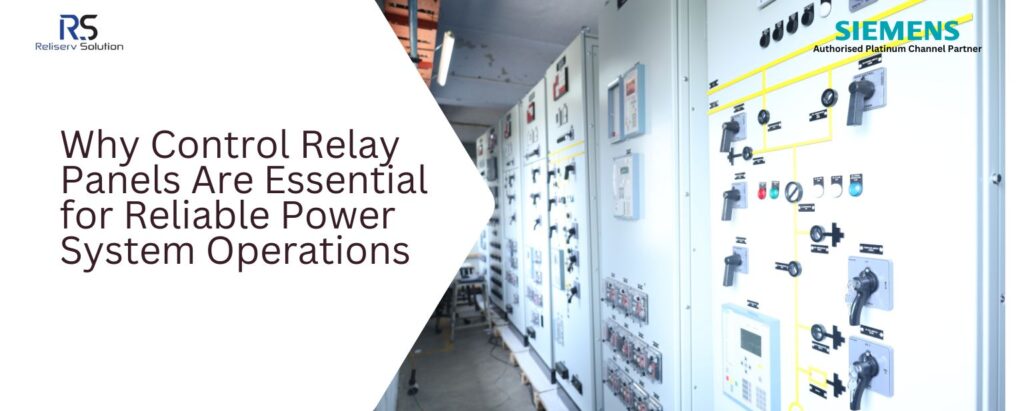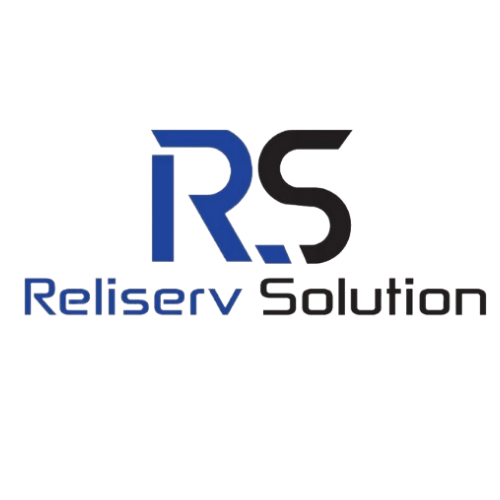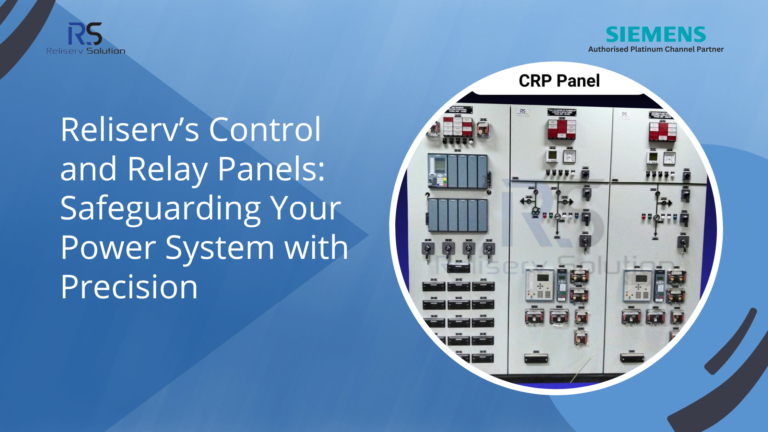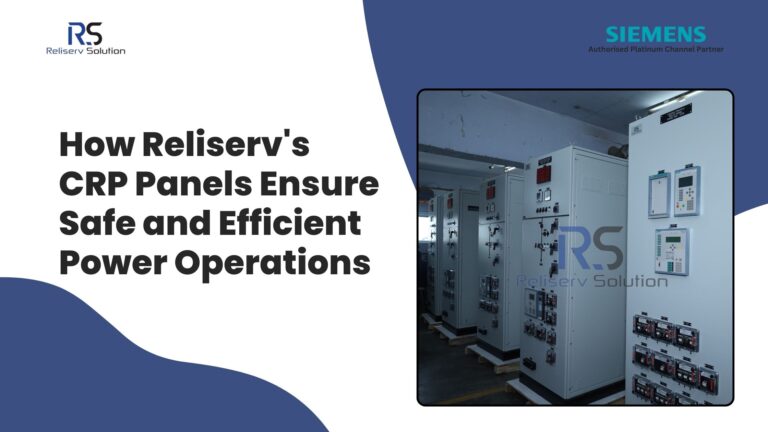For Enquiries: +91-7506112097 / +91-9137486428
Why Control Relay Panels Are Essential for Reliable Power System Operations
Control Relay Panels are fundamental to the intricate world of power systems, ensuring reliability is maintained. Amidst the complex web of machinery and electrical components, control relay panels stand as silent sentinels, ensuring everything operates smoothly. These crucial devices are pivotal in safeguarding equipment and maintaining optimal performance levels.
But what exactly makes them so essential? From their functions to their benefits, understanding CRP panels can significantly enhance your approach to power management. Let’s dive deeper into this fascinating topic and explore why these panels are indispensable for anyone involved in power system operations.
What Are Control Relay Panels?
Essential parts of electrical system management are control relay panels. They serve as a centralized hub for monitoring and controlling various functions within power distribution networks.
These CRP panels consist of relays, switches, and terminals that work together to manage equipment operation. When sensors detect specific conditions or faults, control relay panels activate corresponding responses. This can include turning devices on or off or sending alerts to operators.
Typically found in industrial settings, these panels enhance safety and reliability by automating processes. They help prevent equipment damage due to overloads or failures. Moreover, CRP panels can be customized based on individual system requirements. This flexibility ensures they meet specific operational needs while maintaining efficiency across diverse applications.
Control Relay Panels: A Critical Component of Power Systems
Control relay panels play a pivotal role in the efficiency and reliability of power systems. They act as the brain behind many electrical operations, managing signals to ensure smooth functionality.
These panels help monitor and control various electrical components, which is crucial for maintaining operational integrity. They protect equipment from potential damage by detecting faults or irregularities in real-time. Additionally, CRP enhances safety by providing mechanisms that automatically disconnect circuits during overloads or short circuits. This feature minimizes risks associated with electrical failures.
In addition to safeguarding equipment, these CRP panels contribute significantly to system automation. Their capability to integrate with advanced technologies improves overall performance and operational flexibility in power systems.
By ensuring seamless communication between devices, control relay panels ultimately help maintain stability across complex networks while optimizing energy consumption. Moreover, click here to learn the importance of CRPs in the power system.
Control Relay Panel Types and Their Purposes
Control relay panels come in various types, each designed to address specific functions within power systems.
- Electromechanical relay panels are among the most common. They utilize mechanical levers and contacts to switch circuits on and off based on predetermined conditions.
- Solid-state relay panels offer a modern alternative, using semiconductor devices for faster switching speeds and greater reliability. Because there are no moving parts on these panels, they are less prone to deterioration.
- Remote Terminan Unitl: RTU is a device used to interface between the field equipment and the control room, enabling remote monitoring and control of electrical equipment in a substation or power system.
- Another important type is the motor control relay panel, specifically engineered for managing electric motors efficiently. This type ensures safe operation while protecting against overloads or faults.
Each category of CRP panels plays a vital role in enhancing system performance and ensuring safety across various applications in electrical networks.
Benefits of Using Control Relay Panels
Control Relay Panels are essential for increasing power systems’ efficiency. They provide centralized control, allowing operators to monitor and manage multiple processes from one location.
One significant benefit is improved safety. These panels help prevent overcurrent or short circuits by automatically disconnecting faulty parts of the system, reducing risks for personnel and equipment alike. Another advantage is reliability. With robust design features, control relay panels ensure consistent performance under various conditions, translating into an uninterrupted power supply—all essential for industrial operations.
Integrating these CRP panels can lead to cost savings as well. By optimizing energy use and minimizing downtime, businesses can achieve better operational efficiency without incurring excessive expenses. They also simplify troubleshooting. Clear indicators and organized layouts make it easier for technicians to identify issues quickly, streamlining maintenance efforts while keeping systems running smoothly.
How to Choose the Right Control Relay Panel for Your System
Selecting the right control relay panel can significantly impact your power system’s efficiency and reliability. Start by determining your specific application needs. Different systems require distinct functionalities. Consider the load capacity of the panel. Ensure it aligns with your system’s demand to prevent overloads or inefficiencies.
Evaluate compatibility with existing equipment as well. This helps prevent problems with integration later on. Don’t overlook safety features like surge protection and circuit breakers. These elements are crucial for preventing damage during unexpected events. Think about scalability too. Choose a panel that allows for future expansions if you plan to upgrade your system later on.
Consult a reputable control relay panel supplier in India who can provide guidance tailored to your requirements, ensuring you make an informed decision without unnecessary complications.
Maintenance and Troubleshooting Tips for Control Relay Panels
Regular maintenance is key to ensuring the longevity of control relay panels. Start by conducting routine inspections. Keep an eye out for corrosion, worn areas, and loose connections.
Keep the panel clean. Dust and debris can affect performance. A gentle wipe with a dry cloth can make a difference. Check the wiring periodically. Operational errors or failures may result from frayed or broken cables. Address any issues immediately to prevent larger problems down the line.
If you encounter malfunctions, refer to your manual first. It frequently includes troubleshooting instructions made specifically for that model. Testing relays individually helps isolate faults quickly; this saves time during repairs. Make it a habit to document findings after each inspection or repair session—this creates a valuable reference for future maintenance efforts.
Training staff on proper handling techniques is essential too; aware operators are less likely to cause accidental damage, enhancing overall reliability.

Case Studies: Real-Life Examples of the Impact of Control Relay Panels on Power Systems
One notable case study involved a manufacturing facility in Mumbai. They faced frequent power outages that disrupted operations. After integrating advanced control relay panels, the facility saw a significant reduction in downtime. The panels enabled quick fault detection and automatic system resets.
Another example comes from a local water treatment plant. Before implementing control and relay panels in substations, they struggled with inconsistent pump performance due to electrical faults. The new relay panels provided precise monitoring and improved coordination among pumps, resulting in enhanced efficiency and reduced energy costs.
In a third instance, an educational institute upgraded its power management by installing custom-made CRP panels designed by leading suppliers in Mumbai. This upgrade minimized voltage fluctuations during peak hours, ensuring uninterrupted service for students and faculty alike for control and relay panels in substations.
These case studies highlight how effective control relay panels can transform power systems across various sectors.
Conclusion
The evolution of control relay panels is a testament to the ongoing advancements in technology and their applications in power systems. As industries continue to demand greater efficiency, reliability, and safety, these panels will play an increasingly vital role.
With the integration of smart technologies and automation, future CRPs are likely to offer enhanced features such as real-time monitoring, remote diagnostics, and improved communication capabilities. This shift not only enhances operational performance but also enables quick decision-making during critical situations.
As businesses seek out reliable solutions for their energy management needs, partnering with a reputable control relay panel supplier in India can make all the difference. These suppliers provide essential equipment that meets industry standards while catering to specific requirements tailored to unique operational environments.
Embracing innovations in control relay technology ensures that power systems remain robust amidst growing demands. The focus on sustainability will further drive developments in this field as organizations aim for greener solutions without compromising reliability. Staying informed about trends in control relay panels empowers companies to adapt effectively.
Reliserv Solution is a Platinum Channel Partner and an authorized supplier of Siemens products, with its main office situated in Mumbai, Maharashtra. Panel building is one of the industries that may benefit from our specialist services and solutions. If you need help or have any questions, get in touch with us by phone at +917506112097 or by email at [email protected]. To find out more about the Control Relay Panels, please click here.



